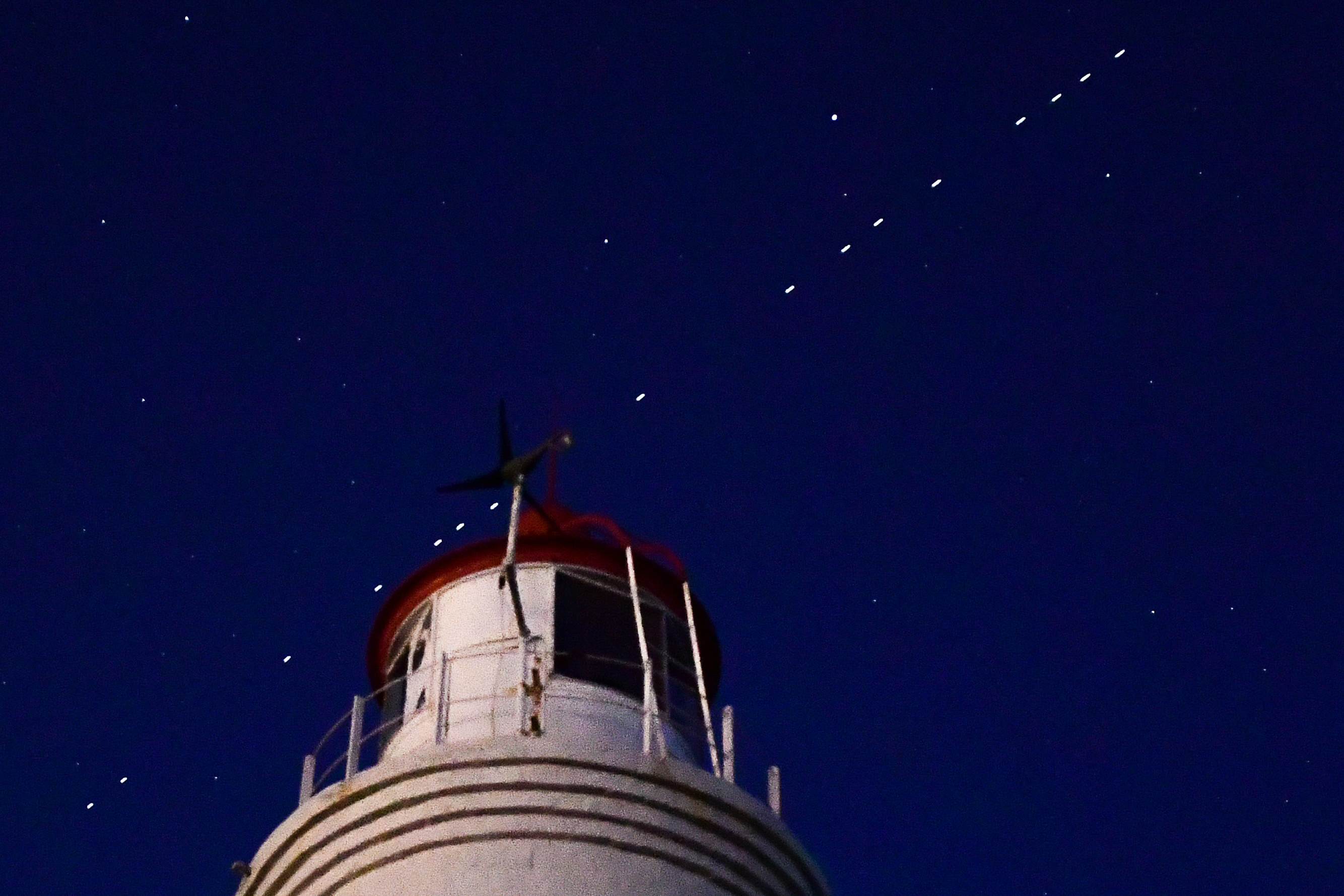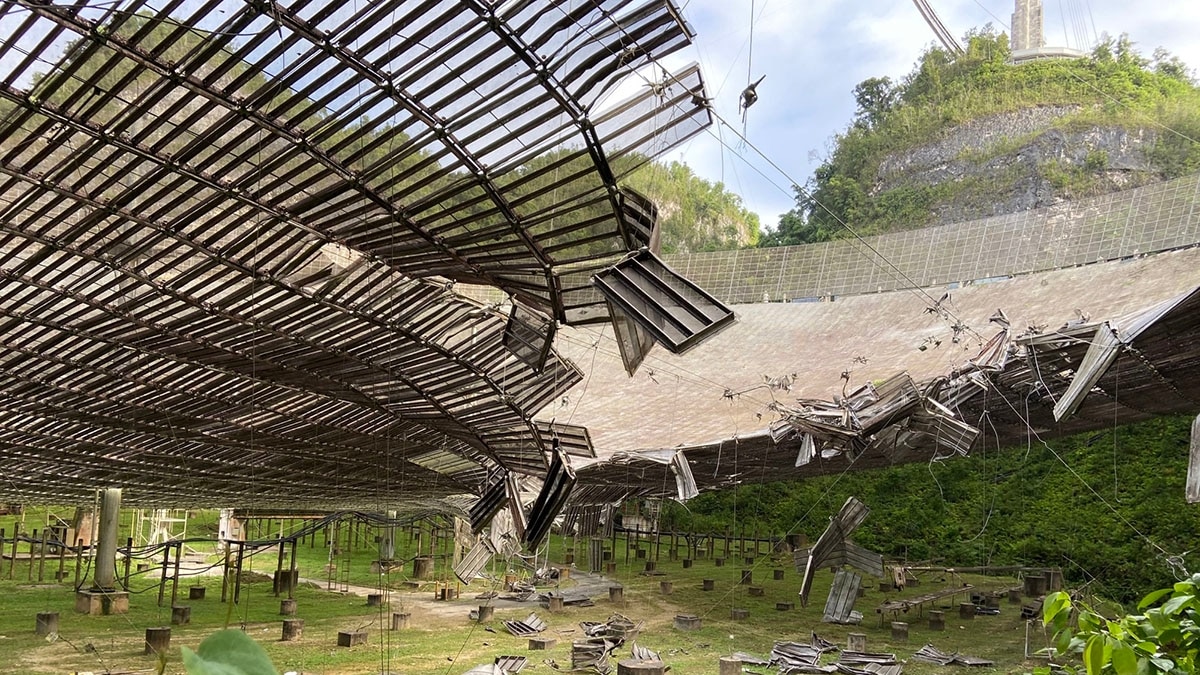The Astronomy Thread
- Thread starter Araxen
- Start date
You are using an out of date browser. It may not display this or other websites correctly.
You should upgrade or use an alternative browser.
You should upgrade or use an alternative browser.
Sadre Spinegnawer
<Banned>
- 4,107
- 4,043
Can already see them if you live in a real dark area. In a line.
I'm an amateur astronomer, sadly not currently in a Real Dark area (8 inch dobsonian, televue optics), but this does, ya know, piss me off. I keep it to myself because I don;t want to be a weirdo, but if you have ever had a really lucky night stargazing, and seen some stuff you never thought you'd find or make out, you would be too. I simply do not get how this is acceptable. I mean, I think I'm saying that I think this is evil. Morally wrong.
ok, I better stop.
- 1

- 1

Mudcrush Durtfeet
Hungry Ogre
- 2,428
- -756

SpaceX begins assembling first Starship Super Heavy booster in South Texas
SpaceX has taken the first unequivocal step towards orbital Starship launches, kicking off assembly of the first Super Heavy booster (first stage) – a necessity for recoverable spaceship missions to Earth orbit and beyond. Although SpaceX could technically get away with building much smaller...
- 1
- 15,583
- -165
As someone who has been living without broadband internet for the last 11 years, I don't give a fuck about your stargazing hobby. Can't wait for Starlink.I'm an amateur astronomer, sadly not currently in a Real Dark area (8 inch dobsonian, televue optics), but this does, ya know, piss me off. I keep it to myself because I don;t want to be a weirdo, but if you have ever had a really lucky night stargazing, and seen some stuff you never thought you'd find or make out, you would be too. I simply do not get how this is acceptable. I mean, I think I'm saying that I think this is evil. Morally wrong.
ok, I better stop.
- 3

Sadre Spinegnawer
<Banned>
- 4,107
- 4,043
You are a very bad, bad, bad manAs someone who has been living without broadband internet for the last 11 years, I don't give a fuck about your stargazing hobby. Can't wait for Starlink.
- 1

Sadre Spinegnawer
<Banned>
- 4,107
- 4,043
"Hello Ethel? Yup, the French stole the barn again. Yup, they're gonna put it in orbit."

- 1

- 1

Burns
Avatar of War Slayer
A company called AST & Science out of Midland, Tx is asking the FCC for approval to put 243 large 4G/5G satellites into a constellation in orbit at an altitude of 447 mi (close to 4 scientific sats called the A-Train). For the first time NASA has officially weighed in on a private space venture before an approval board, stating there is an "unacceptably high" risk of collisions.
From Ars Technica article:

 arstechnica.com
arstechnica.com
From Ars Technica article:
"The satellites are also very large. In order to provide service, AST plans to build spacecraft with large phased array antennas—900 square meters. According to NASA, in planning for potential conjunctions with other satellites and debris in this orbit, this would require proscribing a "hard-body radius" of 30 meters, or as much as 10 times larger than other satellites.
Maneuvering around the proposed SpaceMobile constellation would be extraordinarily taxing, NASA said. "For the completed constellation of 243 satellites, one can expect 1,500 mitigation actions per year and perhaps 15,000 planning activities," the space agency stated. "This would equate to four maneuvers and 40 active planning activities on any given day."
Finally, the space agency is concerned because AST has never built a satellite remotely close in size to the 1-ton or larger vehicles that will populate its constellation. Given this lack of experience, it is expected that 10 percent or more of the satellites may fail, making them unable to maneuver to avoid collisions. NASA found the risk of a catastrophic collision to be "unacceptably high.""
Link to the 30-Oct-2020 NASA statement (downloadable pdf) in the article:
NASA objects to new mega-constellation, citing risk of “catastrophic collision”
“This particular region of space tends to produce a large number of conjunctions.”…
 arstechnica.com
arstechnica.com
Last edited:
- 1
Burns
Avatar of War Slayer
I'm an amateur astronomer, sadly not currently in a Real Dark area (8 inch dobsonian, televue optics), but this does, ya know, piss me off. I keep it to myself because I don;t want to be a weirdo, but if you have ever had a really lucky night stargazing, and seen some stuff you never thought you'd find or make out, you would be too. I simply do not get how this is acceptable. I mean, I think I'm saying that I think this is evil. Morally wrong.
ok, I better stop.
I can see your point, but having high speed internet anywhere on the globe should be a huge boon for the global economy. If you want to talk about the morality of it all, it is hard not to frame it as some rich people and their hobby, vs the potential prosperity of millions of poor rural people having access to the global marketplace (polluting a natural wonder vs pulling people out of poverty). The future of professional astronomy is space based, and these satellites shouldn't affect them.
My biggest issue with Starlink is the same as all satellites and space missions, in that of leaving space junk for future generations to clean up.
To illustrate the clutter already, here is a picture from the Ars Technica article above, of 16 Starlink Sats captured in one photo, as seen from Vladivostok, Russia:

Last edited:
- 1
Sadre Spinegnawer
<Banned>
- 4,107
- 4,043
I know. You are correct. Professional astronomy will develop fully adaptive optics for it, but I'm not an optical engineer!
Yeah. And in any event, these are not long term satellites, right? They are pretty low.
Yeah. And in any event, these are not long term satellites, right? They are pretty low.
Burns
Avatar of War Slayer
I know. You are correct. Professional astronomy will develop fully adaptive optics for it, but I'm not an optical engineer!
Yeah. And in any event, these are not long term satellites, right? They are pretty low.
Aye, the majority of them are very low, so once they go dead, they wont last long as space junk (between 1 month and 1 year).
SpaceX states that the planed average lifespan of a Starlink sat is only 5 years, under power. So, I'd imagine they also plan a continuous replacement rate as sats fail and fall down to earth, but how quickly something decays out of orbit can vary greatly depending on multiple factors (source linked at the bottom, with the info & math).
These factors include:
- atmospheric density (varies by latitude and longitude)
- the satellite's effective cross sectional area, mass, and drag coefficient
- relative position of the sun (time of day)
- the suns activity
- the time of year (distance between sun and earth)
- geomagnetic index (for sats under 400km)
The following table provides a very rough guide to the lifetime of an object in a circular or near circular orbit at various altitudes:
| Satellite Altitude | Lifetime |
| 200 km | 1 day |
| 300 km | 1 month |
| 400 km | 1 year |
| 500 km | 10 years |
| 700 km | 100 years |
| 900 km | 1000 years |
(Starlink altitudes, again for reference)
The initial 12,000 satellites are planned to orbit in three orbital shells:
- First: 1,440 in a 550 km (340 mi) altitude shell,
- Second: 2,825 Ku-band and Ka-band spectrum satellites at 1,110 km (690 mi),
- Third: 7,500 V-band satellites at 340 km (210 mi).
Last edited:
- 3
A lot of good science from Arecibo over the years, I wonder how real the possibility is that it will never re-open.

 www.nationalgeographic.com
www.nationalgeographic.com


Arecibo Observatory in Puerto Rico is at risk of collapsing
Arecibo Observatory, which has discovered planets, searched for alien life, and appeared in classic films, is in critical danger after two cables supporting the telescope failed.
- 2

- 1
Sadre Spinegnawer
<Banned>
- 4,107
- 4,043
- 8,549
- 10,824
Rofl at the movie reference.Pensacola!
But apart from that, funding for that old and slightly misplaced radio-telescope was always iffy, so there is indeed a real risk that funding is cut and a new, more modern radio-telescope built somewhere else instead.
- 1
- 15,583
- -165
I'm just a dumb guy, but it doesn't seem like it should be that hard to avoid collisions in space. I mean Los Angeles is only 5000 square miles has 6.5 million cars that can only drive on like 10% of the land and only move in two dimensions and they seem to be able to avoid each other most of the time even though a significant percentage are being driven by teenagers, drunks, retards, and people posting on twitter while they drive. I know the satellites are going very fast, but there's so much room up there and they have 3 dimensions to work with and they're being controlled by computers. Seems like they should never have to even come within miles of one another.
Cybsled
Naxxramas 1.0 Raider
- 18,222
- 14,739
Better analogy would be a busy highway, but drivers will randomly pass out in their cars and drift into other lanes, hitting another car and all their debris frags any vehicle it touches instantly and the highway lane is unusable for years after the accident.
- 15,583
- -165
Okay, but there are thousands of lanes and they are all 50 miles wide. I see according to Wikipedia that it has actually happened 4 times, but the amount of objects and the amount of space seems to make it pretty unlikely. It's mostly that the consequence are high I suppose, especially since we don't have a way to clean up the mess.Better analogy would be a busy highway, but drivers will randomly pass out in their cars and drift into other lanes, hitting another car and all their debris frags any vehicle it touches instantly and the highway lane is unusable for years after the accident.
Last edited:
Aychamo BanBan
<Banned>
- 6,338
- 7,157
A company called AST out of Midland, Tx is asking the FCC for approval to put 243 large 4G/5G satellites into a constellation in orbit at an altitude of 447 mi (close to 4 scientific sats called the A-Train). For the first time NASA has officially weighed in on a private space venture before an approval board, stating there is an "unacceptably high" risk of collisions.
From Ars Technica article:
"The satellites are also very large. In order to provide service, AST plans to build spacecraft with large phased array antennas—900 square meters. According to NASA, in planning for potential conjunctions with other satellites and debris in this orbit, this would require proscribing a "hard-body radius" of 30 meters, or as much as 10 times larger than other satellites.Maneuvering around the proposed SpaceMobile constellation would be extraordinarily taxing, NASA said. "For the completed constellation of 243 satellites, one can expect 1,500 mitigation actions per year and perhaps 15,000 planning activities," the space agency stated. "This would equate to four maneuvers and 40 active planning activities on any given day."Finally, the space agency is concerned because AST has never built a satellite remotely close in size to the 1-ton or larger vehicles that will populate its constellation. Given this lack of experience, it is expected that 10 percent or more of the satellites may fail, making them unable to maneuver to avoid collisions. NASA found the risk of a catastrophic collision to be "unacceptably high.""Link to the 30-Oct-2020 NASA statement (downloadable pdf) in the article:

NASA objects to new mega-constellation, citing risk of “catastrophic collision”
“This particular region of space tends to produce a large number of conjunctions.”…arstechnica.com
Fuck man, how much money is this project? 243 satellites? That's insane, and then to get them all into space, run them, etc. How can that be profitable??
Sadre Spinegnawer
<Banned>
- 4,107
- 4,043
I voiced my "amateur astronomy!" grievance, but I am pro-satellite if a rather fail safe system is in place to not ever have a Kessler cascade or anything close.
I have no doubt we have the tech to track every damn thing, given a thorough enough system. So I see no need to worry, except for outlier bad operations. There needs to be a system in place to make sure bad operations never happen. I would feel comfortable if NASA has veto power. Because yes, space is huge. The orbital space is huge. Another analogy is simply the surface of the earth itself. The orbital "surface" is significantly larger, and unlike the surface of the earth, has massive uniform usable depth.
Isn't it then a matter of simply tracking everything? And we can do that, I am guessing down to the size of a quarter if need be.
We rock, is my point. There does not need to be problems with satellites. It's pretty impressive, that fact.
I have no doubt we have the tech to track every damn thing, given a thorough enough system. So I see no need to worry, except for outlier bad operations. There needs to be a system in place to make sure bad operations never happen. I would feel comfortable if NASA has veto power. Because yes, space is huge. The orbital space is huge. Another analogy is simply the surface of the earth itself. The orbital "surface" is significantly larger, and unlike the surface of the earth, has massive uniform usable depth.
Isn't it then a matter of simply tracking everything? And we can do that, I am guessing down to the size of a quarter if need be.
We rock, is my point. There does not need to be problems with satellites. It's pretty impressive, that fact.
Share:




